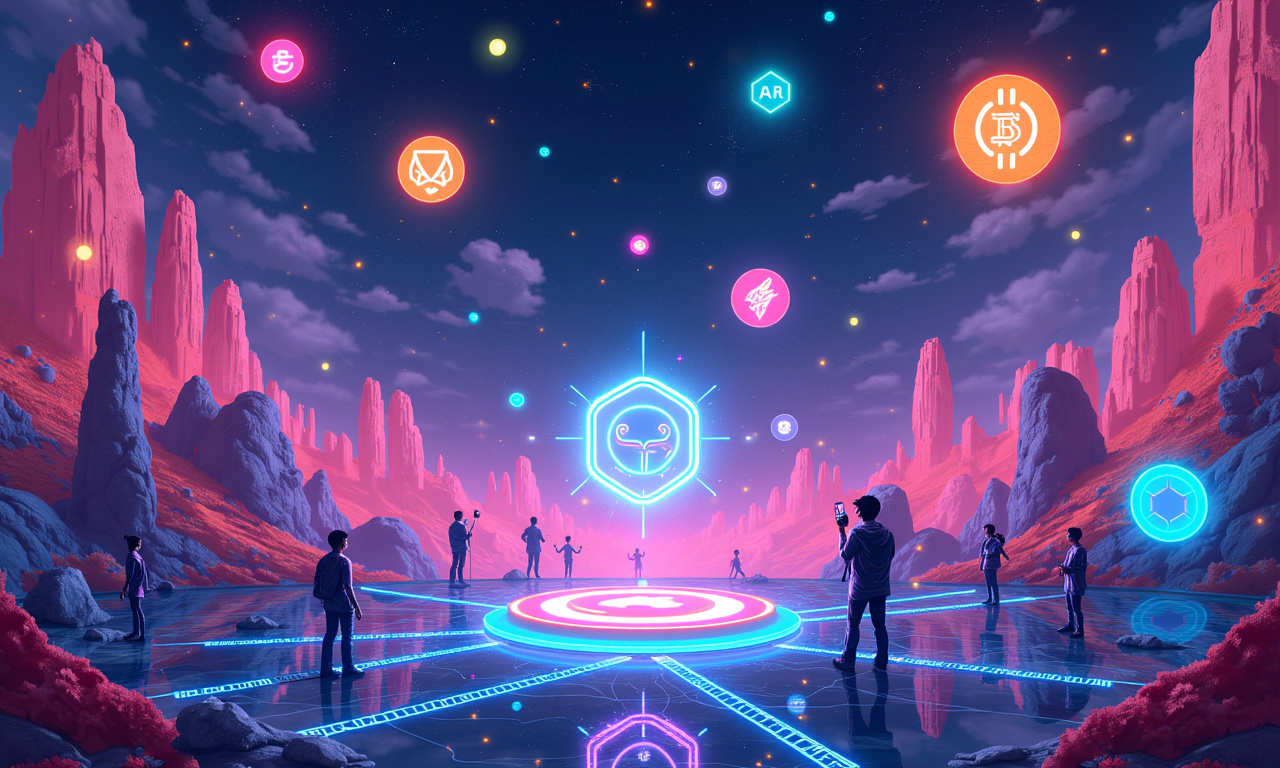The NFT market is flashing green again. We get fed headlines heralding a 20.6% increase in weekly transactions, a $122.6 million kegger. It’s what everybody’s been going on about… the big comeback—the future so bright we gotta wear shade. Before you dive headfirst into the digital art frenzy, let's pump the brakes and ask a crucial question: Is this a genuine resurgence, or are we witnessing a mirage shimmering on the DeFi landscape?
DeFi's Invisible Hand on NFT Volumes
For one, it’s no secret that NFTs have cozied up pretty heavily with the DeFi space. NFT lending platforms, fractionalized ownership – these are all DeFi tools juicing the transaction numbers. And this is where the surprising link comes in. Think of it like this: remember the ICO boom of 2017? Each project based on the last, each one inflating the value of the previous, until the entire house of cards came tumbling down. Are we witnessing a parallel, though more technical, version of this dynamic with NFTs and DeFi today?
Is this new volume truly driven by genuine collectors and enthusiasts? Or are these just DeFi protocols trading NFTs among themselves to manufacture demand? That's the million-dollar question, isn't it?
Governance Tokens: The Canary in Coal Mine?
In the past, spikes in NFT market adoption/saturation have tended to follow cryptoeconomic incentives provided by governance tokens such as LOOKS and BLUR closely. Now, it would be easy to interpret this as universally good news – that we’ve got this thriving, energetic, locally-led, grassroots ecosystem. What if that’s a signal that we should be focusing on something different? What if these tokens only function to reward speculation? Or, they may just be misleading themselves, artificially inflating volume and generating a self-fulfilling prophecy of growth.
Consider this: are we genuinely witnessing a surge in organic interest, or is this just sophisticated gamification at play? It's like those loyalty programs that make you buy things you don't really need just to rack up points. Have we all been duped to pursue ghostly incentives?
Stable TVL: Where's All the New Money?
Here's the kicker: despite all the hype and the impressive transaction numbers, the Total Value Locked (TVL) on platforms like Ethereum remains stubbornly stable. This is alarming. A genuine market recovery would be marked by a healthy flow of new capital. If TVL isn’t increasing, it means that the new money is simply causing the old money to be moved around, not added to the market.
Think of it like a casino. And the chips just continue to change hands. The overall amount of money available is fixed unless new players enter the game. If no new money is coming into the NFT casino, who’s winning after all? Perhaps most importantly, who will be stuck holding the bag when the music stops?
NFT: Revolutionizing Ownership or Hype?
NFTs are changing the way ownership works and providing a new way for artists to earn money from their art. Beyond that, though, they are changing how we think about value in the digital age. All this is great, in theory. Let's be realistic. The reality is that the overwhelming majority of NFTs are speculative assets, just like art, driven by hype and the allure of easy money.
- The Reality of NFT Ownership
- Digital Art & Collectibles
- Provide new monetization avenues for artists
- Revolutionizing ownership
Out of all these “revolutionary” NFTs, how many of them actually provide true utility or amazing artistic value? How many are just JPEGs riding the wave of speculation? The answer though, I would venture to guess, is a rather sobering one.
The Forgotten Voices: Where's the Opportunity?
In all this excitement, make sure you pay attention to the indie artists and creators. They might not be fully enjoying the fruits of this apparent boom. Ironically, the larger competition and hype surrounding the space may actually be causing it to become more difficult for them to get noticed. As with many other markets, the NFT space threatens to turn into a gilded cage for the rich and elite.
Is this really the democratization of art we were sold? Or is that just another example of the rich getting richer? We need to ask ourselves: are we building an inclusive and equitable ecosystem, or are we simply replicating the inequalities of the traditional art world in a digital form?
Sustainability: A House Built on Sand?
Ultimately, the long-term sustainability of this NFT surge hinges on several factors: regulatory clarity, market volatility, and the ability to weed out the scams and rug pulls that continue to plague the space. Without the support of a strong legislative foundation, this rally is just a house of cards.
The NFT market is where the future is at. We need to proceed through it with great caution, armed with healthy skepticism and lots of critical thinking. Is it a real recovery? Maybe. At the moment it appears eerily like a DeFi-fueled hallucination. Like any mirage, that too can evaporate as quickly as it appears. This rapid magic trick can leave investors stuck on a tech-savvy digital island. Don't get burned.
I’m not suggesting that NFTs are over, or even that there’s no opportunity. Is it worth the risk? That's something you need to ask yourself.




